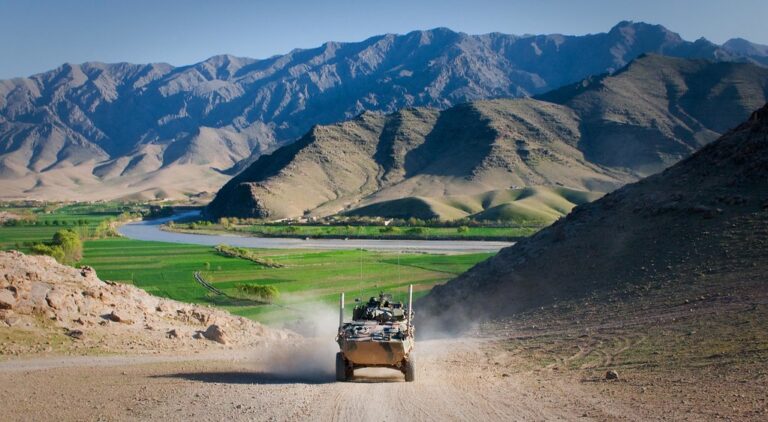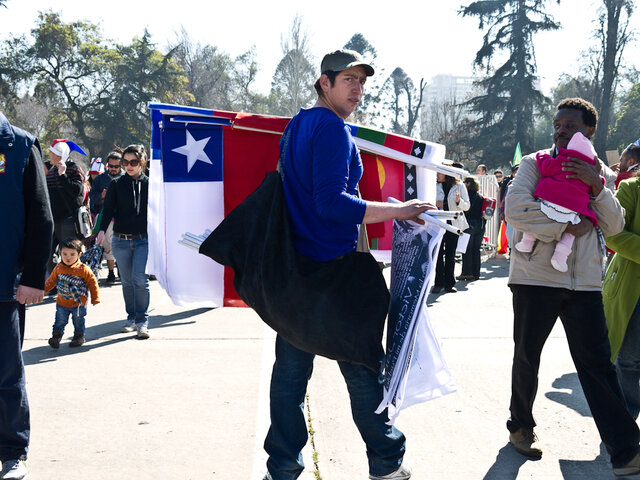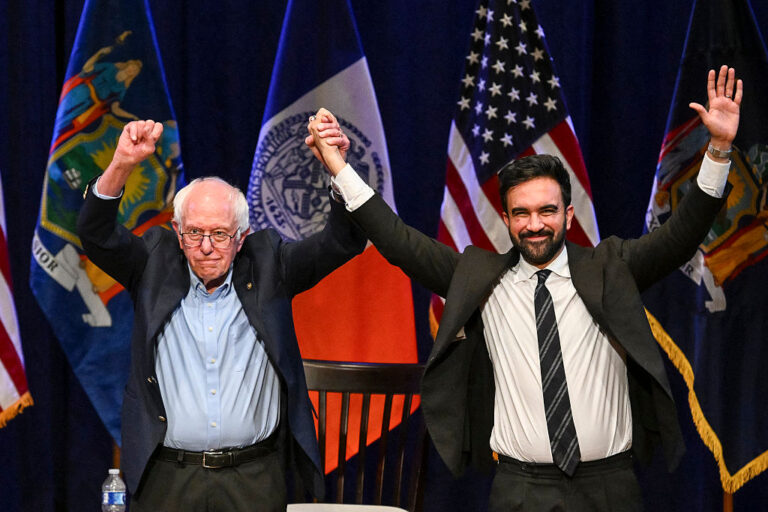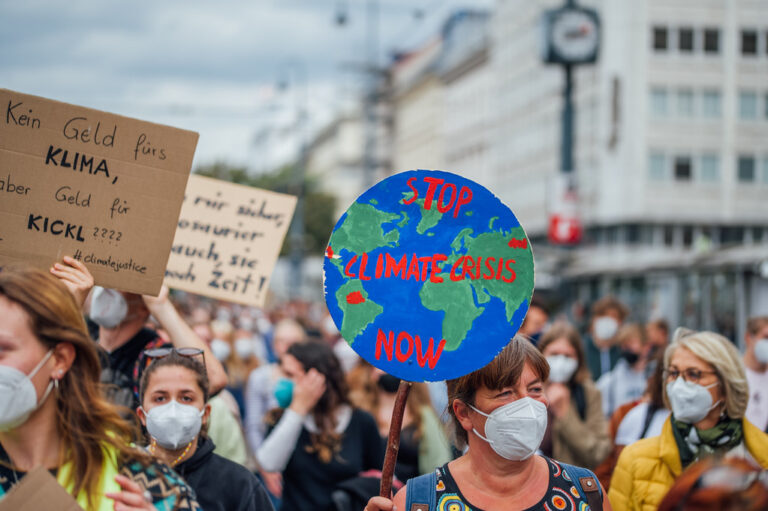
[In the aftermath of the Pahalgam incident, a new wave of Islamophobia, alongside the vilification of Kashmiri Muslims, is sweeping across India. This article, which highlights the Jammu massacres during the partition era, is particularly relevant in this context. – ed .]
Introduction: An Overlooked Genocide
Though the massacres of the Punjab and Bengal are best remembered in the gory Partition record, there existed an overlooked massacre: that of the Muslims of Jammu in 1947. While India burned with riots, Jammu, the winter capital of the princely state of Jammu and Kashmir, witnessed a premeditated onslaught on Muslims. Between August and November 1947, thousands of Muslims were killed, expelled, and plundered of their properties due to a conspiracy between the government forces, right-wing factions, and part of the Dogra Hindu ruling classes. It was not a spontaneous episode of violence; it was part of a plan to change the demographics of Jammu to accommodate a rising Hindu majority concept. At the center of this turmoil was Shyama Prasad Mukherjee, the Jan Sangh founder, who abhorred Muslim political ambitions.
The Princely State and the Sectarian Calculus
Jammu and Kashmir in 1947 was ruled by Maharaja Hari Singh, a Dogra Hindu prince. He ruled over a Muslim majority. Here was an incongruous spectacle: 77% Muslim population, but ruling and government officials and soldiers were largely Hindu, especially from the Jammu Dogra community. Such a lopsided mix was the harbinger of the soon-to-descend open violence.
With Partition, there was a choice: join India, join Pakistan, or stay independent. Hari Singh delayed at first, but behind the scenes, Hindu political power in Jammu was growing. During political talks in Delhi and Lahore, Muslims in Jammu—especially in the western districts near Pakistan—were suspected and resented. The reasoning was appallingly straightforward: if the state acceded to Pakistan, Hindu leaders would lose their privileged position; if it acceded to India, the Muslim majority would assert their rights. To prevent both, a scheme for altering the population was devised.
The Massacre Begins: October–November 1947
By fall of 1947, Jammu was besieged. Refugees from the violence of West Punjab streamed into the area, among them large numbers of Hindu and Sikh. They were resentful of what had been done to them and demanded revenge. Armed and assisted by local Dogra troops, right-wing elements—like the Rashtriya Swayamsevak Sangh (RSS), Hindu Mahasabha volunteers, and local vigilantes—coordinated attacks on Muslim villages and pockets.
Most reports of the events, as presented by Ved Bhasin and Ilyas Chattha, report Muslims rounded up and sent to make-shift camps or onto buses rumored to be to Pakistan for “safe passage.” Ved Bhasin, an old hand as a journalist, who witnessed the events, stated:
“To remember those days of collective orgy my only aim is to indicate that a communalist and murderer has no religion. It was the humanness that suffered at the hands of communal fanatics.”
Most of these convoys were targeted instead. Massacres took place in Kathua, Udhampur, Reasi, and elsewhere. Eyewitness and journalist reports spoke of witnessing blood-choked rivers, bodies stacked in gorges, and fields strewn with mutilated bodies. British official reports conservatively estimated that 20,000 Muslims had been killed; estimates go as high as 100,000. Almost half a million Muslims fled across the border into Sialkot and elsewhere in Pakistan’s Punjab.
These were not surprise raids. This was state-sponsored murder. Accounts indicate that the Maharaja’s army assisted local mobs by arming them and providing them with backup. Guns were distributed from government warehouses; military trucks carried militants, and kidnapped civilians. Soldiers watched or participated in some instances as mobs executed unarmed villagers.
Dispossession as a strategy: land, property and power
The massacre was not a moment of communal violence but a planned dispossession. The exodus of Muslims enabled a massive transfer of property to Hindu and Sikh refugees. Muslim landlords’ or peasants’ property was seized and redistributed. Shops, businesses, and homes were appropriated by newcomers. The erasure was demographically as well as economically. The conspiracy of silence regarding the massacre created a cover for one of the largest land grabs in South Asia’s recent history.
In doing so, the Jammu massacre revealed to us what settler colonialism would mean for the approach of India to Kashmir thereafter. Just as the Indian state would try to transform the population of Kashmir through laws and institutional mechanisms, Jammu in 1947 was transformed by force. As historian Arjun Appadurai once explained it, “ethnic cleansing is often a technique of state-making.” In Jammu, the state was being transformed—not through elections or negotiations, but through violence.
Shyama Prasad Mukherjee: Ideologue of Exclusion
At the center of this violence was Shyama Prasad Mukherjee. He was a cabinet member of Nehru, founded the Bharatiya Jan Sangh, and was among the first to speak of Hindutva politics. The right-wing tends to idealize Mukherjee’s activities in Jammu and Kashmir as nationalist and patriotic. But if you examine closely, you can see a far more sinister plan.
Mukherjee was a vocal opponent of Article 370 and special status of Kashmir as a threat to the unity of India. He was not interested in the business of legislation alone; he was interested in ideas too. In Mukherjee’s eyes, a Muslim-dominated area with its own laws in Hindu-majority India was unacceptable. His 1950s protests for “Ek Vidhan, Ek Nishan, Ek Pradhan” (“One Constitution, One Flag, One Leader”) were based on his desire for a shared vision that would not allow for Muslim political identity.
In 1947, Mukherjee’s oratory brought about resentment against the Muslims. In October of that year, he said, “The Hindu community must assert itself. It must refuse to accept the domination of any other religion in India.” Although he did not openly incite violence, Mukherjee’s firm conviction of Hindu dominance provided the stimulus for the killings in Jammu. His inability to condemn the killings and his subsequent silence over the forced expulsion of Muslims are important.
Also, his association with the Hindu Mahasabha—a party implicated in the violent attacks—questions his assertions of being a constitution-compliant citizen. Mukherjee was not a mere witness. He was a participant in a broader political effort to eliminate the Muslim identity from the conception of the nation. His disdain for Pakistan wasn’t based upon a belief in a neutral national identity but in a firm conviction of India as a Hindu country.
The Long Shadow of the Jammu Massacre
The effects of the 1947 Jammu massacre are still present today. Jammu’s demographics were irreversibly changed. It had a higher Muslim population before Partition but now has a massive Hindu population, which was added through settling and displacing others. This change enables the Indian government to present Jammu as the “loyal” half of the Union Territory, as opposed to the “seditious” valley. The idea of changing the population that had started in 1947 has come back in more official forms: land laws, residence certificates, and settlement projects for non-Muslims.
The massacre also defined the boundary between communities, which would go on to shape Indian politics for the next couple of years. The Jan Sangh, and later the BJP, used the story of Muslim betrayal, favoritism towards minorities, and Hindu persecution—a story tested in Jammu. Mukherjee’s death (he was died while in detention in 1953 due to cardiac complication however hinutva gang try to potray it as a planful murder by Nehru) has been mythologized, but his involvement in dispossessing Muslims of land in Jammu is seldom questioned.
Historiography and Erasure: The Silence of the State
The Jammu killings are not so well remembered as the Punjab massacres, about which a good deal is written. Indian forces have helped repress that record. Textbooks hardly mention it. No investigation has taken place, no payment, no memorials. The government has ruled to forget.
Why the silence here? Because it would undermine the very foundations of Indian secular nationalism to admit the massacre. It would show that ethnic cleansing was not merely a Pakistani crime but was also committed by Indian collaborators and government agents. It would contradict the assumption that Kashmir acceded to India freely. And it would reveal the pervasive impact of Hindu majority control on the Indian state structure.
Survivor Stories: Words from History
The survivors’ accounts of the massacre provide chilling glimpses of the magnitude and character of the violence.
Hussein Gujrar remained in Tarowali mohalla, Sialkot. His family was attacked at Nawakot, Jammu when he was 18 years old. He recalls, “The Dogra troopers came to our house one night and killed my father, mother, sister, and two younger brothers. Luck enough, I had gone out for the evening and was not at home that night and thus I did not get killed. Having returned the next day morning, I found the four of them having been butchered and their bodies were lying scattered all around. They looted all the belongings of all the rooms of the Maharajah’s soldiers. I walked from Nawakot to Sialkot with a handbag in my possession.” (6 November 1947 massacre that wiped out half of Muslim population of Jammu city)
Zafar Butt fled Jammu to Sialkot during the latter part of 1947. He lost all members of his family in Nawa Kot. He claimed, “My whole family was murdered by the Dogra troopers in Nawa Kot.” (It was the November 6 massacre that murdered half the Muslims in Jammu city.)
Zarar Hussian, is employed by the central government and now resides in Sialkot cantonment, was a kid when his family had to migrate out of Jammu. He states, “The state forces of Maharaja were leading the massacre, slaughtering the Muslims brutally in Jammu city. My father was a well-known lawyer in the court of Jammu city. We had to migrate from Jammu to Sialkot.” (1947-When Jammu’s Rivers Turned Red
Hajra lost 17 members of her family in Udhampur. She explains the tough experience she had to go through to escape from the killings. She remembers, “I ran to save my children and took refuge in a small village named Reasi. I had given birth to a baby boy the night before the killings. While traveling the hard route on the road, I came to know that the baby in my arms died and was cold. Because of hunger and loss of shelter, I lost two other children in the following weeks.”
Conclusion: Memory Against Historical Amnesia
The 1947 Jammu massacre is not history—it is a crucial moment in the creation of modern India. It exposed how empty were the promises of secularism, the violence hidden in nationalist discourse, and how far political leaders would go to gain power over the people. The Muslim dead of Jammu were not simply innocent victims of Partition but victims of a political design that wanted to change the area to reflect a Hindu India. To remember Jammu is to defy amnesia about the past, and let current injustice dominate. It is to confront the falsehoods that support official narratives. And to see those—like Shyama Prasad Mukherjee—whose legacy is not unifying people, but dividing them. Faiz Ahmad Faiz wrote, “We shall see the day when mountains of tyranny will blow away like cotton.” Until that day comes, we must speak the truth of Jammu—not as memory, but as resistance.
References:
“Issue Brief on Jammu Massacre of 1947 – An Often Overlooked Story of Horror,” Institute of Strategic Studies Islamabad, November 2023.
“The Forgotten Massacre That Ignited the Kashmir Dispute,” Al Jazeera, November 6, 2017.
“Ved Bhasin,” Wikipedia.
“How Syama Prasad Mookerjee Fought for J&K’s Integration with India,” Indian Express, January 23, 2023.
“Kashmir and the Sangh: How Syama Prasad Mookerjee Became a Martyr for the Cause,” Indian Express, January 30,
(A version of the article appeared earlier in People’s Review)




খুবই ভালো ও সময়োপযোগী উদ্যোগ।